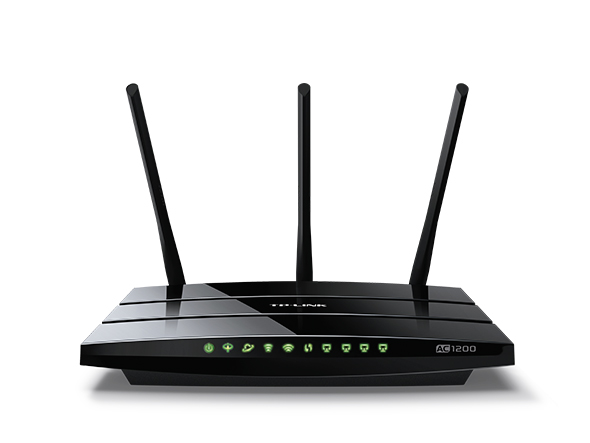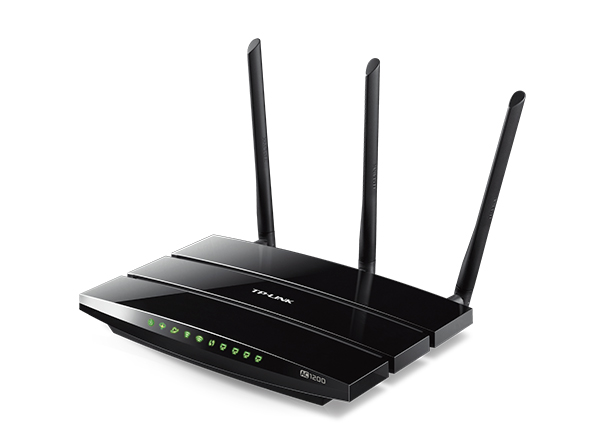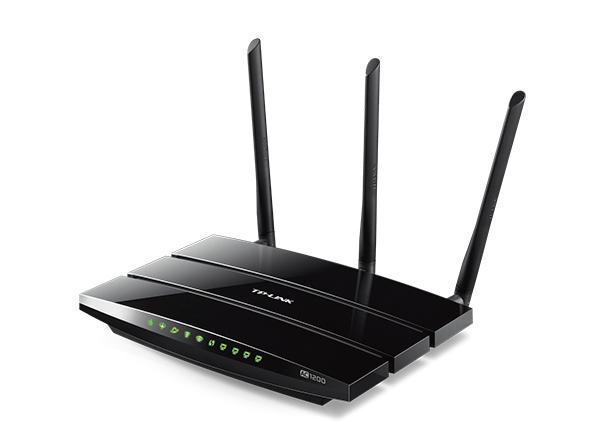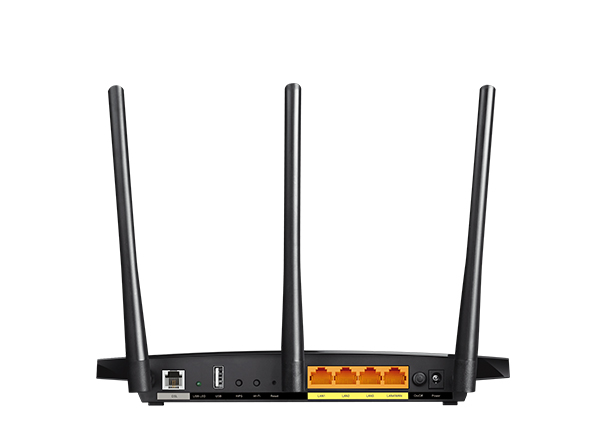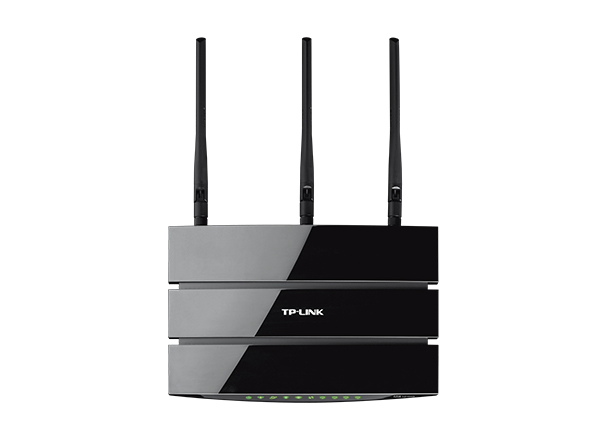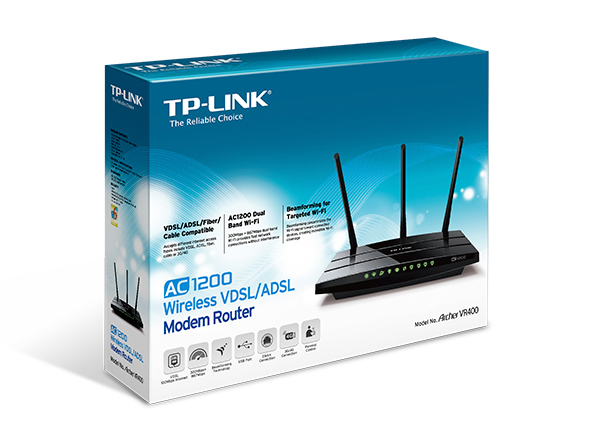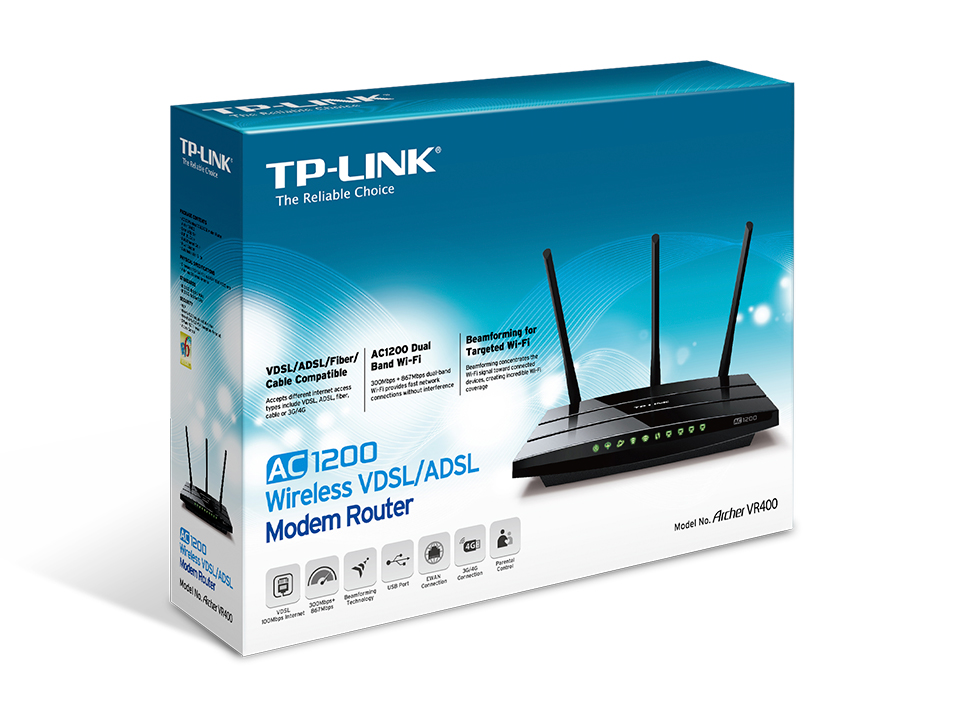Archer VR400
AC1200 Wireless VDSL/ADSL Modem Router
- Speedy Wi-Fi – Superb wireless experience with 300Mbps (2.4GHz) + 867Mbps (5GHz) dual band Wi-Fi connections
- Superior Range – Three fixed antennas provide stable wireless connections and optimal coverage
- Versatile Connectivity – Fully compatible with the VDSL2/ADSL2+/ADSL2/ADSL standards, as well as fiber, cable and 3G/4G Internet services
- Beamforming Technology – Improves wireless range and performance at 5GHz band
- USB Port – Supports storage and print service sharing, FTP and media servers as well as 3G/4G dongle
- Tether App – TP-LINK Tether provides the easiest way to access and manage the router on your iOS and Android devices
| HARDWARE FEATURES | |
|---|---|
| Interface | 3× 10/100/1000Mbps RJ45 LAN Ports, 1× 10/100/1000Mbps RJ45 WAN/LAN Port, 1× RJ11 Port,1× USB 2.0 Port |
| Button | WPS Button, Wi-Fi On/Off Button, Reset Button |
| External Power Supply | 12V/1A |
| IEEE Standards | IEEE 802.3, IEEE 802.3u, 802.3ab |
| VDSL2 Standards | ITU G.993.2, Up to 17a profile (POTS)ITU-T G.993.5 (G.vector)ITU-T G.998.4 (G.INP) |
| ADSL Standards | Full-rate ANSI T1.413 Issue 2,ITU-T G.992.1(G.DMT),ITU-T G.992.2(G.Lite),ITU-T G.994.1 (G.hs), |
| ADSL2 Standards | ITU-T G.992.3 (G.DMT.bis) |
| ADSL2+ Standards | ITU-T G.992.5 |
| Dimensions ( W x D x H ) | 8.5 × 4.9 × 1.2 in (215.6 × 124.6 × 31.6 mm) |
| Antenna Type | 2× fixed Omini-Directional antennas |
| WIRELESS FEATURES | |
|---|---|
| Wireless Standards | IEEE 802.11ac/n/a 5GHz, IEEE 802.11b/g/n 2.4GHz |
| Frequency | 2.4 GHz and 5 GHz |
| Signal Rate | 867Mbps at 5 GHz, 300Mbps at 2.4 GHz |
| Wireless Functions | Enable/Disable Wireless Radio, WMM, Wireless Statistics |
| Wireless Security | 64/128-bit WEP, WPA/WPA2, WPA-PSK/WPA2-PSK encryptions |
| Transmission Power | <20dBm (2.4 GHz), <23dBm (5 GHz) |
| Wireless Schedule | Support 2.4 GHz and 5 GHz Wireless Schedule |
| SOFTWARE FEATURES | |
|---|---|
| Security | NAT Firewall, SPI Firewall, Access Control, Service Filtering, Denial of Service (DoS), SYN Flooding, Ping of Death, IP and MAC Address Binding |
| Operating Modes | VDSL/ADSL Modem Router, Wireless Router, 3G/4G Router |
| Management | Web-Based Configuration (HTTP / HTTPS ), Remote management, Command Line Interface, SSL for TR-069, SNMP v1/2c, Firmware Upgrade, Diagnostic Tools, Free Online Firmware Update |
| DHCP | Server, Client, DHCP Client List, Address Reservation, DHCP Relay |
| Port Forwarding | Virtual Server, Port Triggering, DMZ, ALG, UPnP |
| Dynamic DNS | DynDns, NO-IP, TP-Link |
| VPN | OpenVPN, PPTP VPN, IPSec VPN |
| Protocols | Supports IPv4 and IPv6 |
| ATM/PPP Protocols | ATM Forum UNI3.1/4.0, PPP over ATM (RFC 2364), PPP over Ethernet (RFC2516), IPoA (RFC1577/2225), MER\IPoE (RFC 1483 Routed), Bridge (RFC1483 Bridge), PVC – Up to 8 PVCs |
| Advanced Features | Parental Controls, Network Address Translation(NAT), Port Mapping(Grouping), Static Routing, DDNS, IGMP V1/V2/V3 |
| Guest Network | 2.4GHz Guest Network, 5GHz Guest Network |
| OTHERS | |
|---|---|
| Certification | CE, RCM, RoHS |
| Package Contents | AC1200 Wireless MU-MIMO VDSL/ADSL Modem Router Archer VR400External SplitterRJ11 DSL CableRJ45 Ethernet CablePower AdapterQuick Installation Guide |
| System Requirements | Microsoft Windows 98SE, NT, 2000, XP, Vista™ or Windows 7, 8, 8.1, 10, macOS, NetWare, UNIX or LinuxInternet Explorer 11, Firefox 12.0, Chrome 20.0, Safari 4.0, or otherJava-enabled browserSubscription with an internet service provider (for internet access) |
| Environment | Operating Temperature: 0℃~40℃ (32℉ ~104℉)Operating Humidity: 10%~90% non-condensing |
† Maximum wireless signal rates are the physical rates derived from IEEE Standard 802.11 specifications. Range, coverage, and the maximum number of connected devices are based on test results under normal usage conditions. Actual wireless data throughput, wireless coverage, and number of connected devices are not guaranteed and will vary as a result of 1) environmental factors, including building materials, physical objects, and obstacles, 2) network conditions, including local interference, volume and density of traffic, product location, network complexity, and network overhead, and 3) client limitations, including rated performance, location, connection quality, and client condition.
